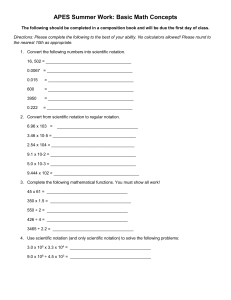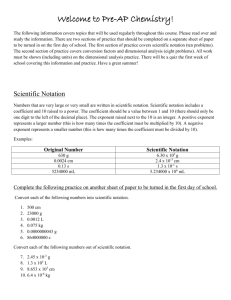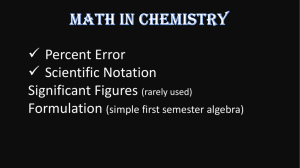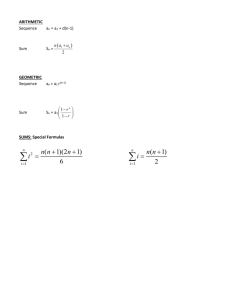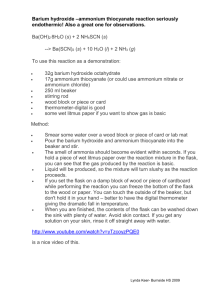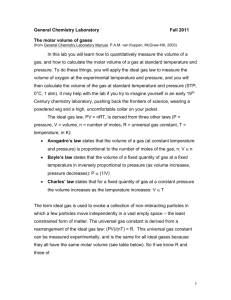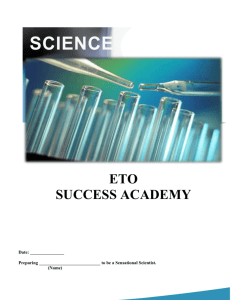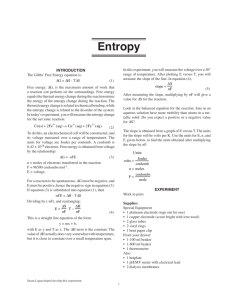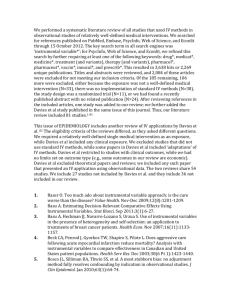Unit 1 Learning Goals and Achievement Scale
advertisement
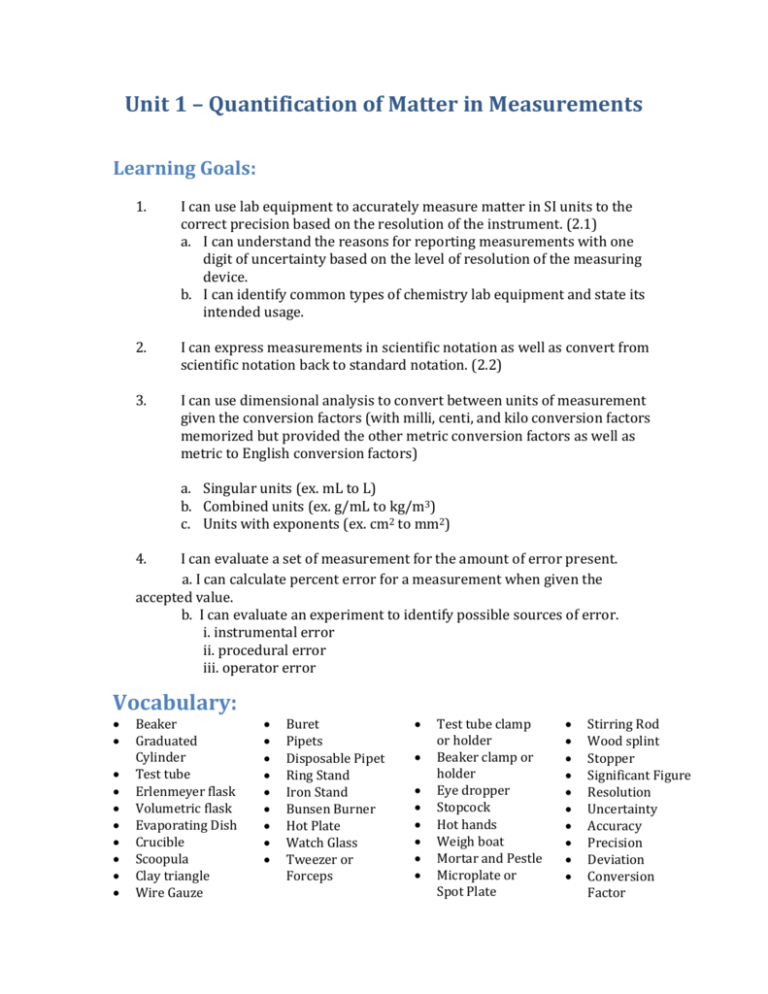
Unit 1 – Quantification of Matter in Measurements Learning Goals: 1. I can use lab equipment to accurately measure matter in SI units to the correct precision based on the resolution of the instrument. (2.1) a. I can understand the reasons for reporting measurements with one digit of uncertainty based on the level of resolution of the measuring device. b. I can identify common types of chemistry lab equipment and state its intended usage. 2. I can express measurements in scientific notation as well as convert from scientific notation back to standard notation. (2.2) 3. I can use dimensional analysis to convert between units of measurement given the conversion factors (with milli, centi, and kilo conversion factors memorized but provided the other metric conversion factors as well as metric to English conversion factors) a. Singular units (ex. mL to L) b. Combined units (ex. g/mL to kg/m3) c. Units with exponents (ex. cm2 to mm2) 4. I can evaluate a set of measurement for the amount of error present. a. I can calculate percent error for a measurement when given the accepted value. b. I can evaluate an experiment to identify possible sources of error. i. instrumental error ii. procedural error iii. operator error Vocabulary: Beaker Graduated Cylinder Test tube Erlenmeyer flask Volumetric flask Evaporating Dish Crucible Scoopula Clay triangle Wire Gauze Buret Pipets Disposable Pipet Ring Stand Iron Stand Bunsen Burner Hot Plate Watch Glass Tweezer or Forceps Test tube clamp or holder Beaker clamp or holder Eye dropper Stopcock Hot hands Weigh boat Mortar and Pestle Microplate or Spot Plate Stirring Rod Wood splint Stopper Significant Figure Resolution Uncertainty Accuracy Precision Deviation Conversion Factor Dimensional Analysis Percent Error Instrumental Error Procedural Error Operator Error Achievement Scale: Learning Goal I can use lab equipment to accurately measure matter in SI units to the correct precision based on the resolution of the instrument. I can use dimensional analysis to convert between SI units of measurement given the conversion factors. C Level Can measure quantities to the correct resolution. B Level Can explain the reasoning for showing measurements with a particular number of significant figures. A Level Can apply the rules of measurement and significant figures to real life scenarios that may be unethical due to errors in reporting measurement. Can convert between units with no more than two steps. (some errors in converting measurements with units raised to powers, fractions, and percents) Can convert between units involving units raised to powers and perform conversions involving two or more steps. Can convert between units involving fractions, units raised to powers, percents, and perform conversions involving two or more steps. I can evaluate a set of measurement for the amount of error present. Can identify types of Can calculate the scientific error percent error given a given a situation. set of theoretical and experimental measurements. Can evaluate an experimental situation for the type of error and can calculate the percent error given a set of theoretical and experimental measurements. Sample Questions C Level: 1. Measure the following line in centimeters: ______________________________ 2. Convert 40.6mg to g. 3. What type of error is present if a balance consistently measures mass 0.2g less than the actual amount? B Level: 4. A student reports the mass of a sample of magnesium as 3.52g. What does this measurement tell you about the resolution of the balance that was used? 5. How many nm are present in 56.7km? 6. A student measures the density of gold to be 18.7g/mL. If the accepted density of gold is 19.3g/mL, what was the student’s percent error? A Level: 7. Explain an example of how reporting the incorrect number of significant figures in a measurement could be unethical. Give reasoning behind how significant figures are determined in measurements and why they are important. 8. Convert 40.0g/cm3 to kg/L. 9. A chemist finds the density of lead to be 13.40g/mL by using the water displacement method first to find the volume and then using a balance to find the mass of the lead. The accepted value for the density of lead is 11.35g/mL. What is his percent error and what type of error was present in the experiment? Answers: 1) 4.71cm 2)0.0406g 3) instrumental error 4)The balance has a resolution to the 0.1g place and the last decimal is an estimate. 5)5.67 x 1013nm 6) 3.11% error 7) If a chemist used a graduated cylinder that had a resolution of 0.1mL but instead reported her data as 4.55503mL, she is reporting the data as if she is certain to the 10,000th place instead of only the 10th place, thereby giving a false notion of how precise her measurement was. She might have been reporting on the accuracy of the purity of a cure for cancer and have misled researchers by saying that she was much more sure of her answer (to the 10000th place) than she really was (10th place). 8) 40.0kg/L 9) 18.06%; procedural error because the lead was wet when the mass was taken. The mass should have been taken before using the water displacement method.


